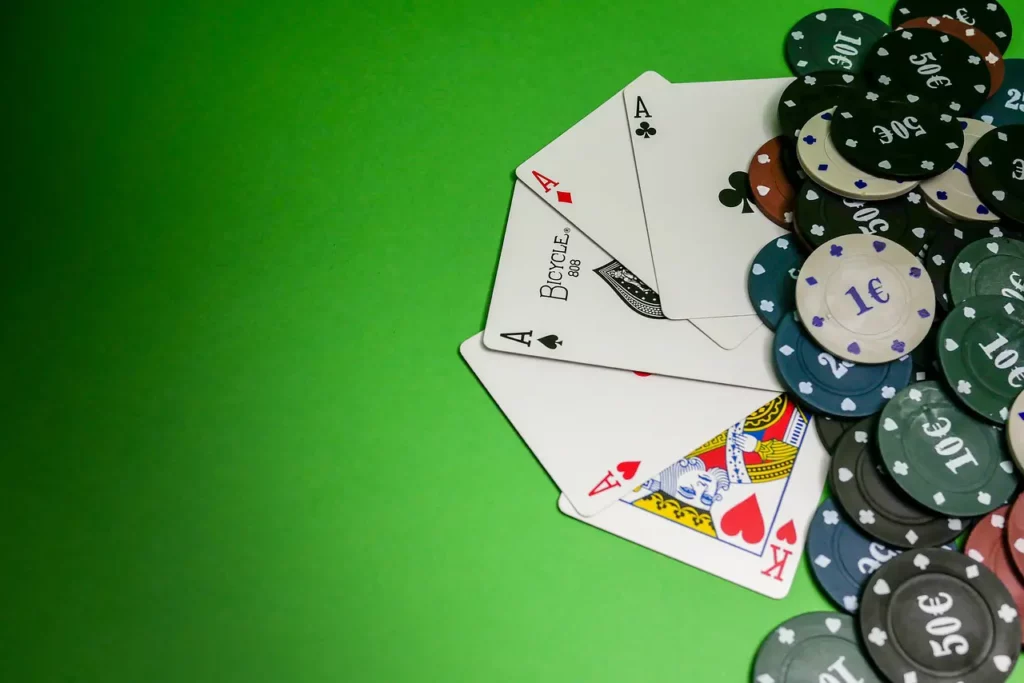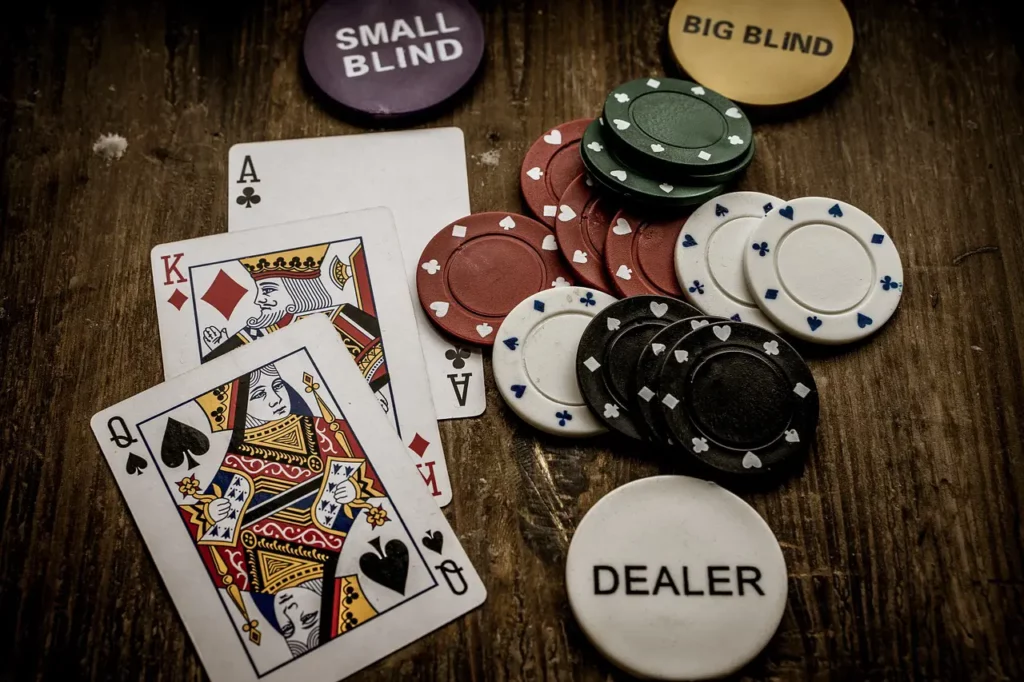সক্রিয় জুয়া খেলার ঘর ৫০% স্বাগতম বোনাস
আপনার বাজিগুলির জন্য বড় আমানত রাখবেন তখন ৳13,000 পর্যন্ত ১০০% বোনাস পান!
Poker is one game that has retained its sheen and popularity from the 16th century to date. However, mastering this game of luck and strategy takes work, especially when the game has gained many different variants, each with distinct rules.
This guide explains the fundamentals of poker so you can always play wisely and have an edge on outsmarting your fellow players.

Let’s start the guide by breaking down essential poker components.
Poker is a card game played with a standard deck of 52 cards. This deck has four suits (hearts, diamonds, clubs, and spades) with 13 cards. These 13 cards include 3 face cards (jack, queen, and king) and 10 number cards (Ace to 10).

A poker game is all about the strength of the hand, which is defined by the hand ranking chart of the variant you are playing. Below are standard poker hand rankings used in most game versions, from highest to lowest.
Poker chips can have distinct denominations depending on the number of players and the poker version you pick. They are used as currency in the game. The most commonly used poker chips are white, red, and blue. The white chip is valued the least, while the blue chip is valued the most. The chip value is again dependent on the specific game you are playing.

Now, the game’s main idea is to bet on your hand ranking compared to other players on the table. In computerised video poker, you would compete against the dealer. Punters have the following betting choices when putting their stakes.
Now, let us learn how a typical game of poker proceeds in real-time.
Step 1 – Card Dealing
The dealer burns one card and deals two cards, also known as hole cards, to each player in a clockwise direction.
Step 2- Ante Bet
The first or the ante bet is made by every player on the table. It is generally the smallest chip value in the game.
Step 3 – First Betting Round
The first betting round, pre-flop, begins when each player has the hole cards in their hands. Punters check their hands and decide to call (match the ante bet), raise (increase the bet), hold (not make a bet), check (call for a showdown), or drop (discard their hand).
Step 4 – Second Betting Round
Flop is the second betting round. In this, the dealer places three community cards face-up on the table. Punters then compare their hands with these cards and decide to bet in the second round.
Step 5 – Third Betting Round
Turn is the 3rd betting round in poker, and it starts with adding a fourth community card to the table. Punters bet accordingly.
Step 6 – Fourth Betting Round
With the addition of the fifth community card, the final betting round, river, starts.
Step 7 – Showdown
Any player in between the rounds can call for a showdown. The last two players go for an automatic showdown. The player with the best hand wins the pot.
Poker is a time-tested game that demands strategies and luck in equal portions. While you can’t have any hold over luck, you can certainly be ahead of your fellow punters by understanding how the game works, when to bet, what to bet, and when to bluff.
Online poker in a live dealer setting at casinos like Babu88 takes the thrill to a new high by offering a wide range of options and freedom to bet in a real casino setting. Before you venture this out, try a few virtual games. But only bet with a licensed and verified online casino.



